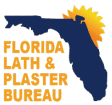Technical Advisories
TA-ST #1 03.21
Conventional Portland Cement-Based Plaster Materials Meet the Florida Building Code
There has been some misunderstanding that the materials and components of conventional portland cement-based plaster, which are those that comply with ASTM C 926, require a Florida Product Approval Number like some proprietary materials and systems like the Exterior lnsulation Finish Systems (EIFS). Hopefully, this technical bulletin will clarify the issue.
There has been some misunderstanding that the materials and components of conventional portland cement-based plaster, which are those that comply with ASTM C 926, require a Florida Product Approval Number like some proprietary materials and systems like the Exterior lnsulation Finish Systems (EIFS). Hopefully, this technical bulletin will clarify the issue.
| ta-st-01-03.21__stucco___the_florida_code_edits_2021.03.18.pdf | |
| File Size: | 627 kb |
| File Type: | |
TA-ST #2 03.21
Plaster Accessories & Construction Adhesives
For many years now, plastering contractors have been using construction adhesives to affix accessories such as cornerbead, casing bead and others to solid substrates. We have found that the proper adhesives perform better than the mechanical fasteners mandated in ASTM C 1063.
For many years now, plastering contractors have been using construction adhesives to affix accessories such as cornerbead, casing bead and others to solid substrates. We have found that the proper adhesives perform better than the mechanical fasteners mandated in ASTM C 1063.
| ta-st-02-03.21_plaster_accessories___construction_adhesives.pdf | |
| File Size: | 1044 kb |
| File Type: | |
TA-ST #3 03.21
FRC, IRC and the 5th Edition “Curing” Requirements
There is a lot of noise in the system lately regarding the “new” curing paragraph with the FRC (703.6.5). Actually, this paragraph is not new at all. It has been a part of the IRC since most of the old codes were combined into one years ago. It was specifically redacted by Florida from the base version of the IRC at the time it was adopted as the basis of the new FRC. Why?
There is a lot of noise in the system lately regarding the “new” curing paragraph with the FRC (703.6.5). Actually, this paragraph is not new at all. It has been a part of the IRC since most of the old codes were combined into one years ago. It was specifically redacted by Florida from the base version of the IRC at the time it was adopted as the basis of the new FRC. Why?
| ta-st-03-03.21_frc_irc_and_the_5th_edition_“curing”_requirements__edits_2021.03.21.pdf | |
| File Size: | 527 kb |
| File Type: | |
TA-ST #4 03.21
Choosing a Consulting Expert for Stucco Inspection or Review
It seems that there has lately been a tremendous increase in the number of claims of defective design, workmanship or supervision regarding “stucco” on projects throughout Florida. As a result, there is now a plethora of so called “experts” offering their opinions on design and installation techniques. Unfortunately, many of these consulting “experts” really have little or no knowledge or experience with stucco.
It seems that there has lately been a tremendous increase in the number of claims of defective design, workmanship or supervision regarding “stucco” on projects throughout Florida. As a result, there is now a plethora of so called “experts” offering their opinions on design and installation techniques. Unfortunately, many of these consulting “experts” really have little or no knowledge or experience with stucco.
| ta-st-04-03.21_choosing_a_stucco_consultant__2021.03.19.pdf | |
| File Size: | 544 kb |
| File Type: | |
TA-ST #5
Wall Water Management.
When applying cement plaster (stucco) systems over wall assemblies that are subject to disintegration when exposed to moisture or excessive water vapor, it is imperative to determine what water management (barrier) method will be used to protect interstitial framing cavities and affected substrates. This document discusses Concealed Barriers, Face Barriers, Hybrid Methodologies and Drainage Cavities.
When applying cement plaster (stucco) systems over wall assemblies that are subject to disintegration when exposed to moisture or excessive water vapor, it is imperative to determine what water management (barrier) method will be used to protect interstitial framing cavities and affected substrates. This document discusses Concealed Barriers, Face Barriers, Hybrid Methodologies and Drainage Cavities.
| ta-st_5_water_management_systems.pdf | |
| File Size: | 4246 kb |
| File Type: | |
